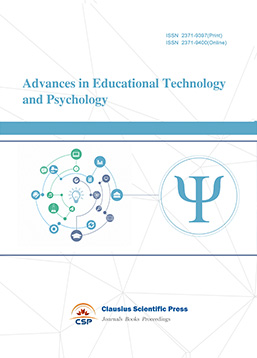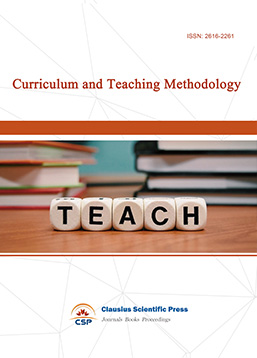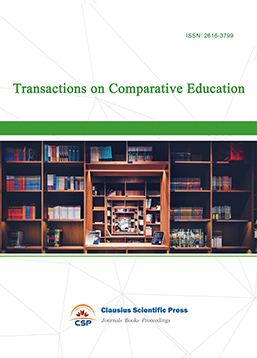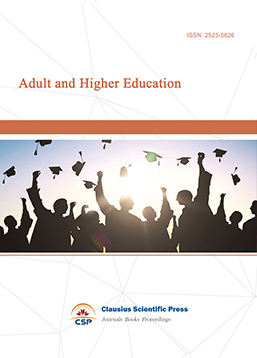Research on the influencing factors of inter-provincial differences in educational expenditure per student in secondary vocational education based on fsQCA method
DOI: 10.23977/avte.2025.070118 | Downloads: 10 | Views: 510
Author(s)
Hu Xinyu 1
Affiliation(s)
1 School of Finance and Public Administration, Anhui University of Finance and Economics, Bengbu, 233030, China
Corresponding Author
Hu XinyuABSTRACT
This study focuses on 31 provinces in China, examining five critical indicators: regional economic development levels, industrial structure, local fiscal capacity, governmental willingness to invest, and the number of full-time teachers. Utilizing fuzzy set qualitative comparative analysis (fsQCA), the research meticulously explores the inter-provincial disparities in per-student expenditure for secondary vocational education and the underlying mechanisms at play. The findings reveal that per-student expenditures exhibit one high-expenditure pattern and two low-expenditure configurational pathways across different regions. By comparing the relationships between these high and low configurations, it becomes evident that, under certain conditions, regional economic development levels, industrial structure, governmental willingness to invest, and the number of full-time teachers are pivotal determinants influencing the funding allocations for secondary vocational education.
KEYWORDS
Secondary vocational education: expenditure per student; Inter-provincial differences; Qualitative Comparative Analysis of Fuzzy SetsCITE THIS PAPER
Hu Xinyu, Research on the influencing factors of inter-provincial differences in educational expenditure per student in secondary vocational education based on fsQCA method. Advances in Vocational and Technical Education (2025) Vol. 7: 135-145. DOI: http://dx.doi.org/10.23977/avte.2025.070118.
REFERENCES
[1] Notice of the Ministry of Finance and other three departments on issuing the "Guiding Opinions on Establishing and Improving the Per-Student Funding System in Secondary Vocational Schools" [Z]. Caijiao [2015] No. 448, 2015-11-09.
[2] Zhao Yonghui, Gao Jinling. Statistics and analysis of secondary vocational education expenditure in China [J]. Education and Career, 2009 (05): 21-23.
[3] Chen Xiangyang. An empirical study on regional differences in average student expenditure of secondary vocational education--based on panel data analysis of Jiangsu from 2008 to 2012 [J]. China Vocational and Technical Education, 2014 (27): 38-49.
[4] Li Xiangyun, Yu Wensong. Regional differences and causes of financial investment in secondary vocational education in my country-an empirical analysis based on 31 provinces across the country [J]. Financial Economic Review, 2015 (02): 1-12.
[5] Gu Cuifeng, Dong Feng. Comparative study on the investment of secondary vocational education in the east and west [J]. Vocational Education Research, 2015 (02): 9-12.
[6] Shen Youlu. Analysis of regional allocation differences of education funds in secondary vocational schools in recent ten years [J]. Vocational Education Newsletter, 2018 (13): 34-51.
[7] Cai Wenbo, Zhai Liuxi. Analysis of investment efficiency and influencing factors of secondary vocational education funding in my country-based on DEAMalmquist index model and spatial panel econometric model [J]. Vocational and Technical Education, 2018, 39 (01): 55-59.
[8] Man Kong. Study on fairness of secondary vocational education funding in china[J]Science Publishing Group, 2018,6(1).
[9] Chen Fu, Zhang Keke. Research on regional differences and dynamic evolution trends in average student expenditure of secondary vocational education in my country-an empirical study based on my country's inter-provincial panel data from 1997 to 2018 [J]. Vocational Education (Late Issue), 2021, 20 (07): 31-38.
[10] Cai Wenbo, Liu Shuang. An empirical analysis of regional differences in average student expenditure of secondary vocational education in my country [J]. Vocational and Technical Education, 2020, 41 (15): 37-42.
[11] Liu Chao. Research on the evolution trend and regional differences of secondary vocational education funding investment in my country-based on education statistics from 2005 to 2019 [J]. Modern Vocational Education, 2022 (31): 133-135.
[12] Ran Yunfang, Shi Weiping. An empirical study on the differences in average expenditure of secondary vocational students among provinces-based on panel data analysis from 2000 to 2011 [J]. Educational Science, 2014, 30 (01): 13-21.
[13] Zhang Wenjing, Ran Yunfang. Analysis of my country's secondary vocational education funding investment and influencing factors since the 21st century [J]. Education and Occupation, 2021, (04): 32-39.
[14] Wu Meihong, Luo Guiming. An empirical study on regional differences in education funding per student in secondary vocational education-based on analysis of provincial panel data from 2009 to 2018 [J]. China Vocational and Technical Education, 2021 (06): 68-74.
[15] Cai Wenbo, Tang Fengqiong. Study on influencing factors of secondary vocational education expenditure in five northwest provinces [J]. Vocational Technical Education, 2016, 37 (16): 46-50.
[16] Li Xinyi, Liu Shuo, Yan Zhili. Research on the average student expenditure gap of secondary vocational education in Beijing, Tianjin and Hebei from the perspective of coordinated development [J]. Contemporary Vocational Education, 2019, (01): 83-90.
[17] Cai Wenbo, Liu Shuang. An empirical analysis of regional differences in average student expenditure of secondary vocational education in my country [J]. Vocational and Technical 11 Education, 2020, 41 (15): 37-42.
[18] Wang Ben, Yan Yanyang. Inter-provincial differences in educational expenditure per student in China and its influencing factors [J]. Economic Geography, 2017, 37 (02): 39-45.
[19] Xu Ling, Li Jiaxin. Research on inter-provincial differences in average student expenditure in secondary vocational education and its influencing factors-a method based on Shapley value decomposition [J]. Vocational and Technical Education, 2022, 43 (12): 45-52.
[20] Yang Guangyu, Yu Xuan. Regional differences, distribution dynamics and influencing factors of financial investment in secondary vocational education [J]. Vocational Education (Late Issue), 2023, 22 (02): 33-42.
[21] Benoît Rihaux, Charles C. Larkin. QCA design principles and applications: new methods beyond qualitative and quantitative research [M]. Translated by Du Yunzhou, Li Yongfa, etc. Beijing: Machinery Industry Press, 2017 (7).
[22] Yu Xuan. Regional differences and dynamic evolution of distribution of general high school education funding in my country--An empirical study based on provincial panel data from 2005 to 2018 [J]. Journal of East China Normal University (Educational Science Edition), 2021 (2): 115-126.
[23] Wang Shanmai. Research on educational input and output [M]. Shijiazhuang: Hebei Education Press, 1999: 106.
[24] Shen Baifu, Yu Shiqiu. A Regional Comparative Study of Provincial Local Education Investment in China [J]. Education and Economy, 1994, (4): 115.
| Downloads: | 15166 |
|---|---|
| Visits: | 810168 |

 Download as PDF
Download as PDF



